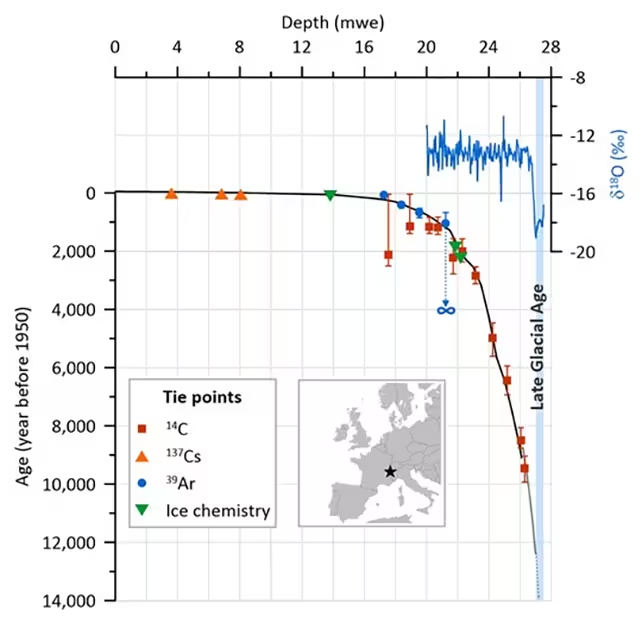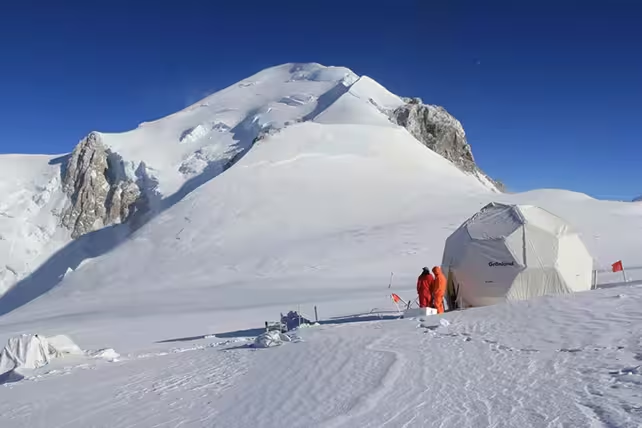4 Minutes
A Breakthrough in European Climate Records
Scientists have achieved a remarkable milestone by analyzing an alpine ice core that chronicles 12,000 years of climate history in Europe. Extracted from the Dôme du Goûter in the Mont Blanc massif—a region straddling France and Italy—this deep ice sample offers the most comprehensive insight yet into how European climate has evolved from the last Ice Age to the present day.
Scientific Context: Why Alpine Ice Matters
Ice cores have long served as time capsules, preserving microscopic traces of Earth's past atmosphere, including dust, volcanic ash, air bubbles, sea salts, and plant-derived aerosols. Until now, most long-term climate data has come from polar regions like Greenland and Antarctica; however, these sites reflect global or hemispheric trends rather than local specifics. The European Alps, by contrast, are intimately connected with the rise of European civilizations, agriculture, and ecosystems. Unlocking a continuous chemical record from this region has the potential to transform our understanding of regional climate dynamics, environmental changes, and human impact over thousands of years.

The Dôme du Goûter Ice Core Extraction and Analysis
The groundbreaking research was led by teams from the French National Centre for Scientific Research (CNRS) and the Desert Research Institute (DRI) Ice Core Laboratory in Nevada. The scientists analyzed a 40-meter (131-foot) column of ice, which was initially drilled in 1999 and carefully preserved for over two decades before advanced dating and chemical analysis techniques made this study possible.
By applying state-of-the-art isotope dating that measured levels of carbon and argon, the team confidently traced the ice core back to the end of the last glacial period—marking the dawn of the Holocene and the beginning of the Mesolithic era characterized by hunter-gatherer societies. According to DRI Ice Core Lab hydrologist Joe McConnell, "For the first time, we have a nearly complete Alpine record of atmospheric chemistry and precipitation extending all the way back to the Mesolithic Period."
Key Discoveries and Climate Insights
Detailed analysis of the ice layers revealed significant shifts in temperature, precipitation, and environmental conditions. During the last Ice Age, summers in the Alps were approximately 3.5°C colder than today, while average temperatures across Western Europe were around 2°C lower. This cooling correlated with higher natural aerosol concentrations captured in the ice—providing a window into atmospheric processes during glacial and interglacial phases.
Moreover, by measuring phosphorus—a key indicator of plant activity—the research team mapped changes in vegetation over millennia. They found that warmer climatic phases corresponded with expanded forests, while periods of increased agriculture and land development in modern centuries showed decreased forest cover.
"It's exciting to find the first alpine ice core containing an intact record of climate that bridges the modern warm period and the very different climate of the last ice age," noted geoscientist Susanne Preunkert of Grenoble Alpes University.

Deep Environmental and Modeling Implications
The combination of local dust, sea salt, sulfur, and soot preserved in the ice allows for exceptionally accurate reconstructions of Europe’s environmental history, surpassing what can be learned from more remote ice samples. In addition to reconstructing past climates, researchers are examining changes in sea salt to track shifting wind patterns and improve climate models. These sophisticated models can now better link aerosol concentrations, cloud formation, and solar radiation—vital for predicting future climate trends in Europe and globally.
As McConnell emphasizes, "If scientists aim to model all possible climate states, both historical and future, they need to validate their simulations against real-world observations. That’s exactly where detailed local records from ice cores like this become indispensable."
Conclusion
The discovery and analysis of the 12,000-year-old Alpine ice core mark a turning point in our understanding of European and global climate history. This unprecedented archive provides a detailed portrait of how natural forces and human activities have shaped the continent's environment. As climate models become more sophisticated, such unique time capsules will play an essential role in unraveling Earth's climate variability and guiding responses to ongoing environmental change.
Source: academic.oup



Comments